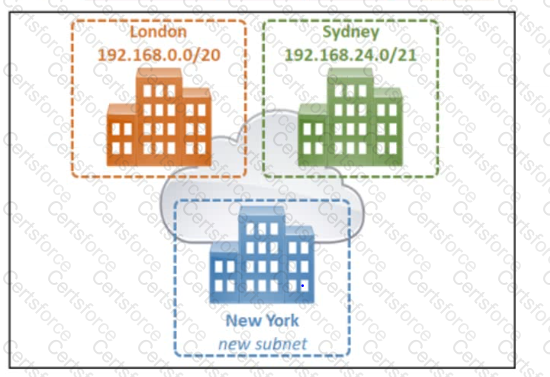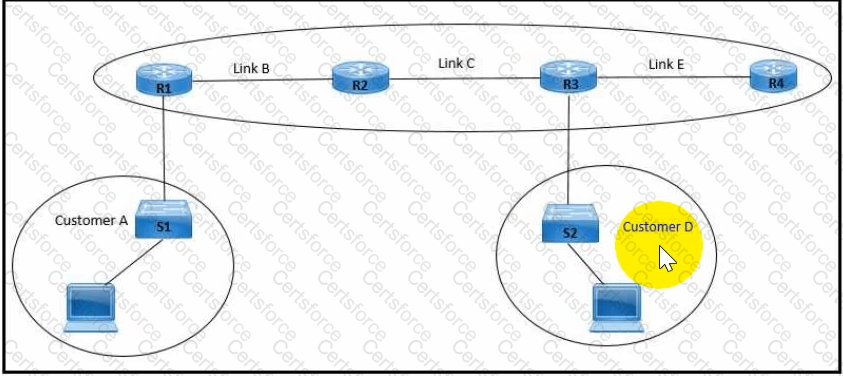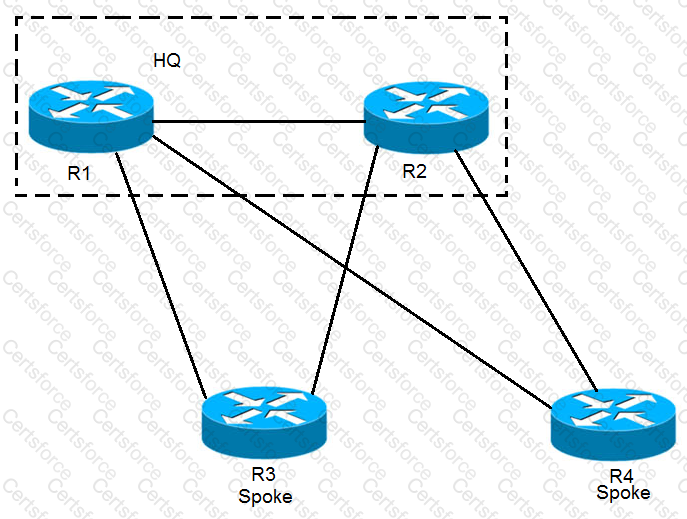An architect must design a QoS model for a business-critical application that Is delay-sensitive and requires high bandwidth. The company's head office hosts the application, and DMVPN tunnels protected with IPsec provide connectivity between the head office and branches. Which solution must the architect choose?
In an SD-WAN architecture, which methods are used to bootstrap a vEdge router?

Refer to the exhibit. A customer is planning to deploy a new branch in New York. The new office will not exceed 1024 users. Which subnet must be used to provide maximum number of host addresses while not providing more than necessary?

Refer to the exhibit An architect is designing an IPv4 plan using the 172 20 0.0/16 network The design must maximize the number of subnets and minimize the number of wasted IP addresses In addition, the plan must allocate a subnet to these customers and links
Customer A, which supports 125 hosts
Customer D, which supports 62 hosts
Links B C. and E
Which two configuration sets meet these requirements'? (Choose two)
A)

B)

C)

D)

E)

An engineer must peer with an ISP for internet connectivity using BGP, initially, the engineer wants to receive only specific prefixes from the ISP and a default route. However, the solution must provide the flexibility to add prefixes in the future at short notice. The ISP has a two-week change process in place. Which route filtering solution must the engineer employ?
Refer to the exhibit.

EIGRP has been configured on all links. The spoke nodes have been configured as EIGRP stubs, and the WAN links to R3 have higher bandwidth and lower delay than the links to R4. When a link failure occurs at the R1-R2 link, what happens to traffic on R1 that is destined for a subnet attached to R2?
How is sub-second failure of a transport link detected in a Cisco SD-WAN network?
Which feature minimizes TLOC connections and reduces strain on the vSmart controller in an SD-WAN architecture?
An organization plans to deploy multicast across two different autonomous systems. Their solution must allow RPs to:
•discover active sources outside their domain
•use the underlying routing information for connectivity with other RPs
•announce sources joining the group
Which solution supports these requirements?
A network architect Is enabling TV services In the LAN. The source will be streaming to the 239.1.1.1 group IP address. Dense mode Is not allowed In the network. Multicast has already been enabled on all network devices In the LAN segment. Which action must the architect take to finalize the design?